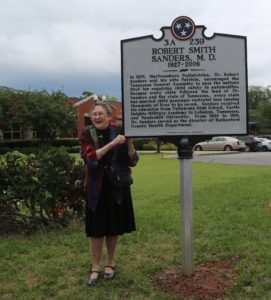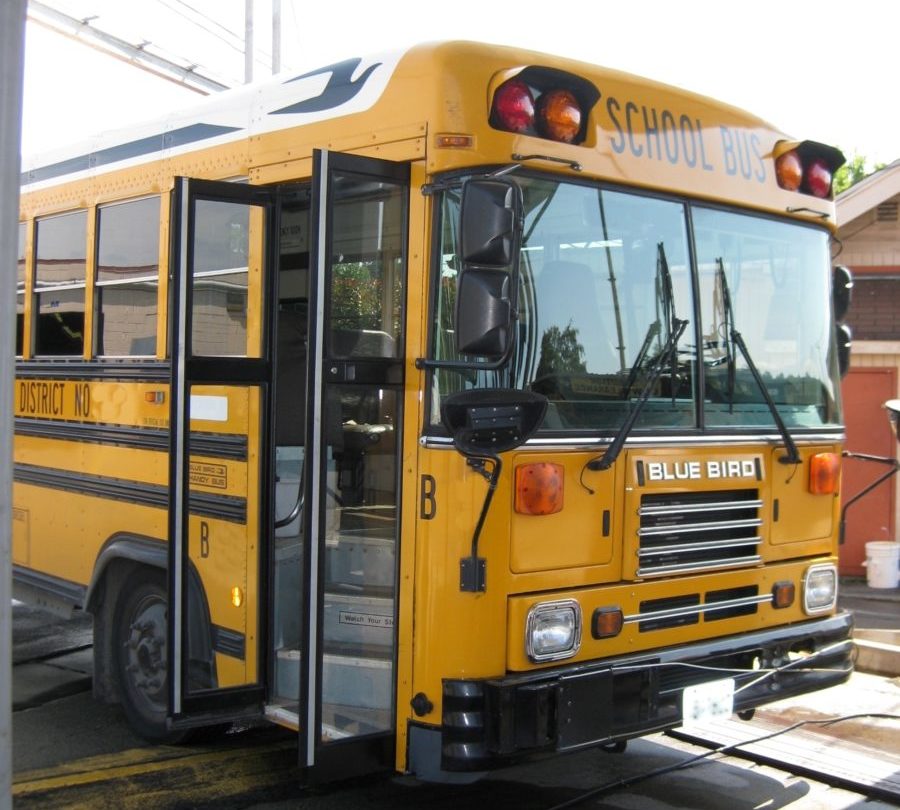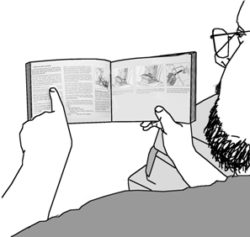Documentation is a must when checking CRs, but paper checkup forms use resources, take up storage space, and don’t lend themselves well to data aggregation and analysis. Since many CPSTs now have access to a smartphone, laptop, and/or tablet, the time may be right to consider a digital alternative.
News
SRN Website Now Offers Online Ordering!
Safe Ride News Publications is pleased to bring you this brand new website, as of August 2018. The address remains the same—www.saferidenews.com—but the look, layout, and some functionality have been revised. We hope that the CPS community will like our refreshed look and find it easier to access information.
Most exciting is the addition of e-commerce capability! Read More from “SRN Website Now Offers Online Ordering!”
Dr. Robert and Patricia Sanders Honored for First COP Law

On September 24, 2018, a historical marker was erected during a ceremony in Murfreesboro, Tennessee, to celebrate the 40th anniversary of that state’s child occupant protection (COP) law, the first such law in the world. The marker honors the late Dr. Robert Sanders, a pediatrician well known as Dr. Seat Belt, for his role as a driving force prompting the wave of COP laws that spread across the country. The ceremony was attended by his widow, Patricia Sanders, who is also named on the marker for her involvement in successfully advocating for the Tennessee law.
That very first law required CR use until a child’s third birthday, and it took the Sanders four more years to eliminate a “babes in arms” exception that had been slipped in before passage. The Sanders’ tireless efforts to protect children continue to serve as an inspiration for efforts to strengthen COP laws.
AAP Issues a Revision of CPS Policy Statement
Slight changes continue most aspects of familiar CR selection guidelines, but no longer specifies RF goal of age 2
In August, the American Academy of Pediatrics (AAP) issued a revised version of its policy statement titled “Child Passenger Safety.” The changes primarily affect the wording of recommendations for how long a child should ride rear facing. While the former version, issued in 2011, indicated that a child should stay rear facing until at least age 2 or older, the revised policy simply recommends that children stay rear facing as long as possible, until the height or weight limit of their RF CR is met (without making age 2 the rear-facing goal).
Read More from “AAP Issues a Revision of CPS Policy Statement”
Ask an Engineer: How Do Load Legs Improve CR Performance?
This guest article continues SRN’s “Ask an Engineer” series with Dave Sander, CPST-I and engineer (formerly with Evenflo). This series gives an insider view of how CR engineers develop and design CRs, as well as new insights into CR functionality.
Load legs (aka stability legs, foot props) are not a new invention. They’ve been a common feature of CRs for many years in other parts of the world, especially Europe. But in the U.S., load legs continue to be a bit of a novelty and are found only on a handful of (mostly high-end) RF-only CRs. The feature employs an adjustable metal bar that extends vertically from the CR base to the floor of a vehicle to help manage crash force (see photo, left).
Read More from “Ask an Engineer: How Do Load Legs Improve CR Performance?”
New Jersey Upgrades School Bus Seat Belt Law
In August, the governor of New Jersey signed a law that will require new school buses of any size in that state to be equipped with lap-shoulder belts in all seating positions. The law goes into effect 180 days after enactment, giving transportation departments in that state time to adjust to the new requirements.
Read More from “New Jersey Upgrades School Bus Seat Belt Law”
NHTSA Clarifies 15-Passenger Van Regulations
On August 10, a full-size, 2010 GMC Savana van carrying school-aged children on a field trip in New Hampshire left the highway and struck a tree head on. Although the crash was serious, only one of the 13 passengers was seriously injured. “It appears seat belts saved a lot of lives today,” one state trooper told the a regional news affiliate while on-site at the crash. “These children—most or all—were wearing seat belts.”
Read More from “NHTSA Clarifies 15-Passenger Van Regulations”
Tips for Reading Vehicle Manuals
Certain aspects of vehicle manuals differentiate them from CR manuals. For instance, vehicle manuals must cover topics ranging far beyond CPS, and CPS-related topics appear in multiple sections of a vehicle manual. Therefore, when reading vehicle manuals—or instructing others to read them—it helps to understand the following: Read More from “Tips for Reading Vehicle Manuals”
Ask an Engineer: Can CRs Be Made in a Variety of Colors?
Sure! You can have any color car seat you want, as long as it’s black!
This guest article continues SRN’s “Ask an Engineer” series with Dave Sander, CPST-I and engineer (formerly with Evenflo). This series gives an insider view of how CR engineers develop and design CRs, as well as new insights into CR functionality.
Boosters in bright colors have been on the market for a while, but have you ever wondered why CRs with harnesses don’t come in a variety of colors? I’m talking about the plastic shells, not the pads. As you might have noticed, that plastic is nearly always black, white, or a shade of gray, sort of like what Henry Ford famously said about his Model Ts, paraphrased above. And there’s a reason for that!
Read More from “Ask an Engineer: Can CRs Be Made in a Variety of Colors?”
Ask an Engineer: Are Differences Among Webbing Types Important?
The following guest article was inspired by an enlightening conversation between SRN editor Denise Donaldson and Dave Sander, CPST-I and engineer (formerly with Evenflo, but employed elsewhere at the time this article was written).
Have you ever given close attention to the webbing used for car seat harnesses, LATCH straps, or vehicle seat belts? If so, you may have noticed that some are wider or feel thicker, smoother, or rougher than others. You may have also noticed that some have stripes (actually called panels), and that those panels vary in appearance and number.
Read More from “Ask an Engineer: Are Differences Among Webbing Types Important?”





